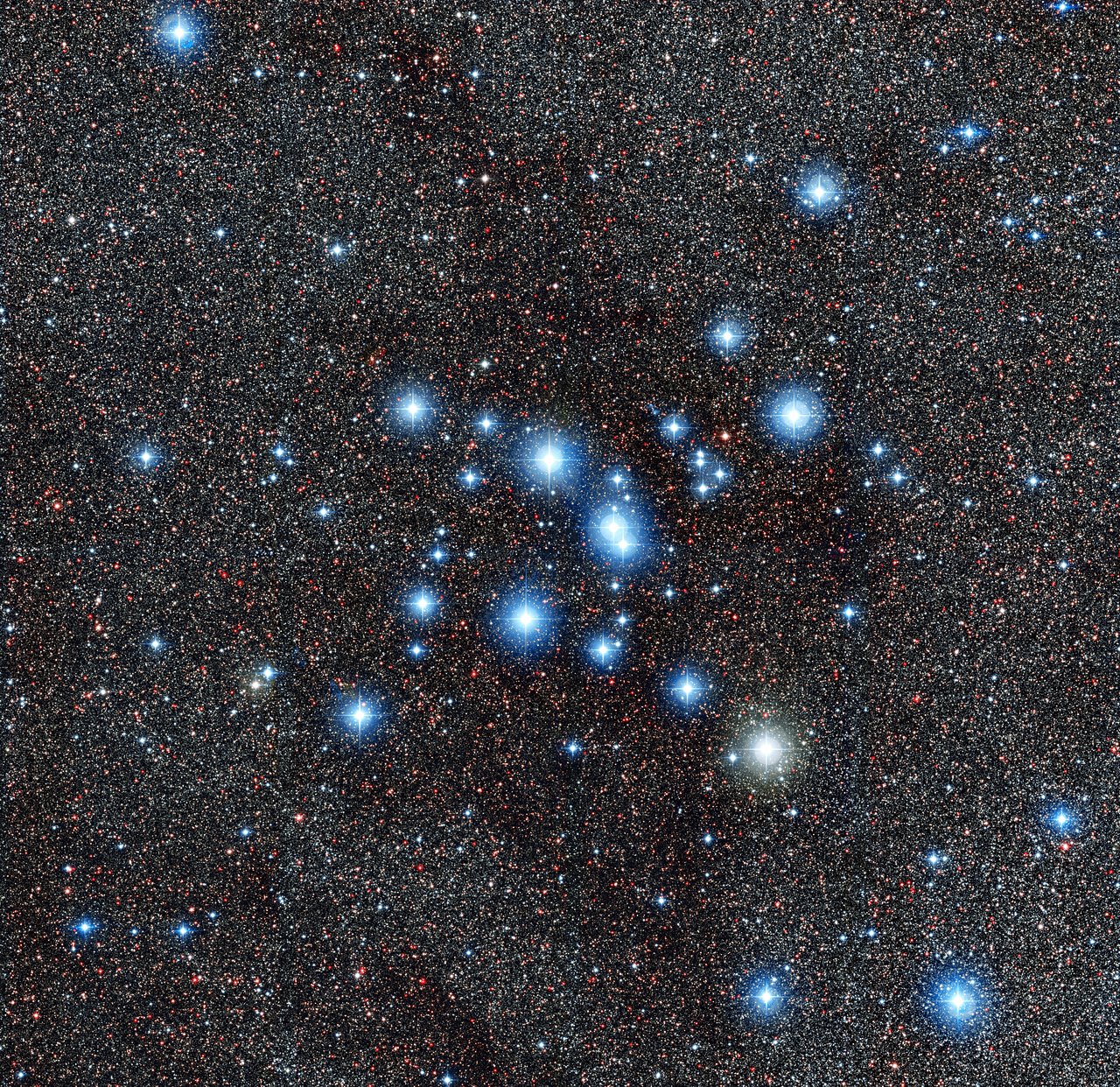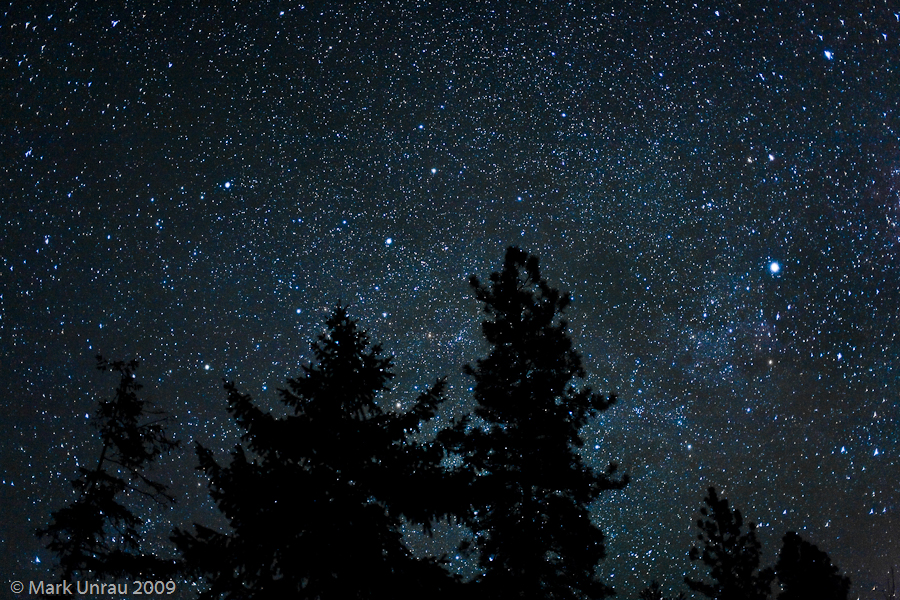Welcome to DU!
The truly grassroots left-of-center political community where regular people, not algorithms, drive the discussions and set the standards.
Join the community:
Create a free account
Support DU (and get rid of ads!):
Become a Star Member
Latest Breaking News
General Discussion
The DU Lounge
All Forums
Issue Forums
Culture Forums
Alliance Forums
Region Forums
Support Forums
Help & Search
Science
Related: About this forumThe star cluster Messier 7 (Big Space Pic)

A new image from ESO’s La Silla Observatory in Chile shows the bright star cluster Messier 7. Easily spotted with the naked eye close to the tail of the constellation of Scorpius, it is one of the most prominent open clusters of stars in the sky — making it an important astronomical research target.
Messier 7, also known as NGC 6475, is a brilliant cluster of about 100 stars located some 800 light-years from Earth. In this new picture from the Wide Field Imager on the MPG/ESO 2.2-metre telescope it stands out against a very rich background of hundreds of thousands of fainter stars, in the direction of the centre of the Milky Way.
At about 200 million years old, Messier 7 is a typical middle-aged open cluster, spanning a region of space about 25 light-years across. As they age, the brightest stars in the picture — a population of up to a tenth of the total stars in the cluster — will violently explode as supernovae. Looking further into the future, the remaining faint stars, which are much more numerous, will slowly drift apart until they become no longer recognisable as a cluster.
Open star clusters like Messier 7 are groups of stars born at almost the same time and place, from large cosmic clouds of gas and dust in their host galaxy. These groups of stars are of great interest to scientists, because the stars in them have about the same age and chemical composition. This makes them invaluable for studying stellar structure and evolution.
An interesting feature in this image is that, although densely populated with stars, the background is not uniform and is noticeably streaked with dust. This is most likely to be just a chance alignment of the cluster and the dust clouds. Although it is tempting to speculate that these dark shreds are the remnants of the cloud from which the cluster formed, the Milky Way will have made nearly one full rotation during the life of this star cluster, with a lot of reorganisation of the stars and dust as a result. So the dust and gas from which Messier 7 formed, and the star cluster itself, will have gone their separate ways long ago.
more
http://www.eso.org/public/news/eso1406/
InfoView thread info, including edit history
TrashPut this thread in your Trash Can (My DU » Trash Can)
BookmarkAdd this thread to your Bookmarks (My DU » Bookmarks)
10 replies, 5742 views
ShareGet links to this post and/or share on social media
AlertAlert this post for a rule violation
PowersThere are no powers you can use on this post
EditCannot edit other people's posts
ReplyReply to this post
EditCannot edit other people's posts
Rec (18)
ReplyReply to this post
10 replies
 = new reply since forum marked as read
Highlight:
NoneDon't highlight anything
5 newestHighlight 5 most recent replies
= new reply since forum marked as read
Highlight:
NoneDon't highlight anything
5 newestHighlight 5 most recent replies
The star cluster Messier 7 (Big Space Pic) (Original Post)
n2doc
Feb 2014
OP
NYC_SKP
(68,644 posts)1. Wow. It's a lot messier than I thought!
Seriously, every child must be take at least once, before their teens, to a place far away from city lights so that, on a clear night see how many millions and billions of stars are out there.
I'll bet a frightening number of children haven't done this, and don't know what the milky way is.

mopinko
(70,112 posts)2. that's the sort of learning
that we focused on as homeschoolers. we took lot of trips, many camping, many about our beautiful city. we knew this shit was not on the tests, but we didn't have to care.
Fumesucker
(45,851 posts)3. After the Northridge quake there were a lot of people calling 911 that night about a glowing cloud
They were seeing the Milky Way for the first time.
http://physics.fau.edu/observatory/lightpol-astro.html
The National Institute of Health's issue of the January 2009 Environmental Health Perspectives Journal included a story from the 1994 Northridge earthquake which had knocked out the power in Los Angeles. Apparently local emergency centers then had received numerous calls from anxious residents reporting a "strange, giant, silvery cloud" in the dark sky. What they were really seeing - for their very first time - was the Milky Way, so obliterated by the urban sky glow that it had become forgotten and had practically become an urban legend. (Environ Health Perspective 2009 January, Vol. 117, No. 1, pages A20 - A27).
Ed Krupp, the director of the Griffith Observatory in Los Angeles, had reported that many callers did not want to believe that what they saw when the power was out really was the normal, unpolluted, appearance of the night sky. He has said that "Since so many of us never see a non-light-polluted night sky from one year to the next, a mythology about what the people think a true star-filled sky looks like has emerged."
An example of this from around here in South Florida is that during the night time, clouds are bright white, when in fact they should appear black against a black sky. I am amazed of how many of our visitors seem surprised by that fact, when I tell them it. Try to see a faint nebula, a comet or recognize a constellation against such competition and you'll realize why the first science, astronomy, is slipping away from people's consciousness.
Ed Krupp, the director of the Griffith Observatory in Los Angeles, had reported that many callers did not want to believe that what they saw when the power was out really was the normal, unpolluted, appearance of the night sky. He has said that "Since so many of us never see a non-light-polluted night sky from one year to the next, a mythology about what the people think a true star-filled sky looks like has emerged."
An example of this from around here in South Florida is that during the night time, clouds are bright white, when in fact they should appear black against a black sky. I am amazed of how many of our visitors seem surprised by that fact, when I tell them it. Try to see a faint nebula, a comet or recognize a constellation against such competition and you'll realize why the first science, astronomy, is slipping away from people's consciousness.
NYC_SKP
(68,644 posts)4. Wow. I'd never read about that.
Thanks!
![]()
eppur_se_muova
(36,263 posts)5. "Nightfall" was not meant to be a prophecy !
Cleita
(75,480 posts)9. I found a spot way up in the hills beyond Zuma Beach where you
could get a good star show and a faint Milky Way on a clear night. It was above the smog and away from the lights. It's been been developed since then. ![]()
proud patriot
(100,706 posts)6. makes me feel very small
great picture
L0oniX
(31,493 posts)7. The NSA has pictures of you and we all know you really are small.